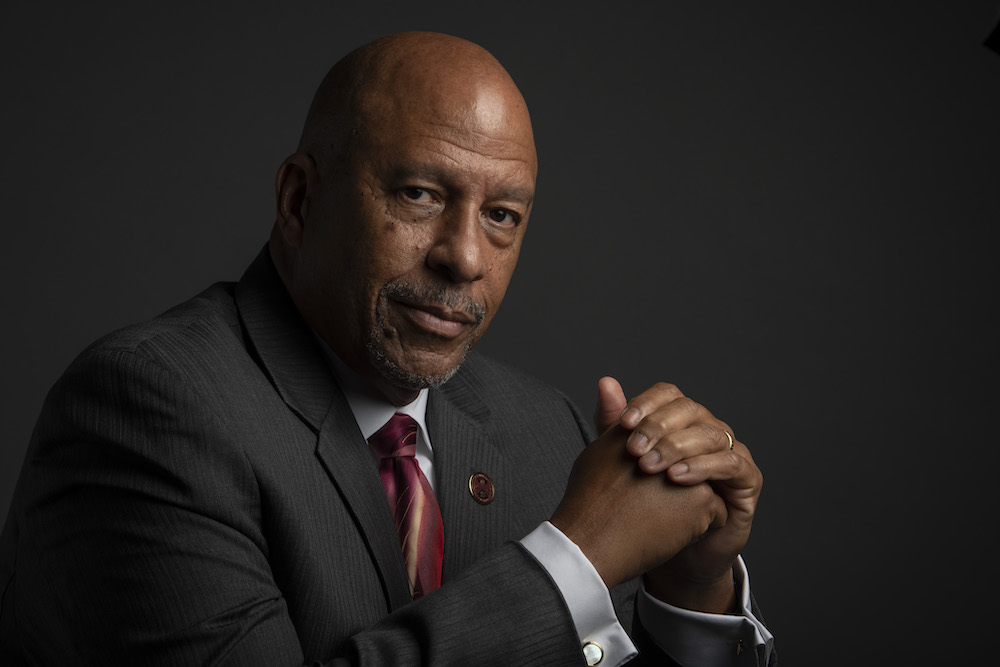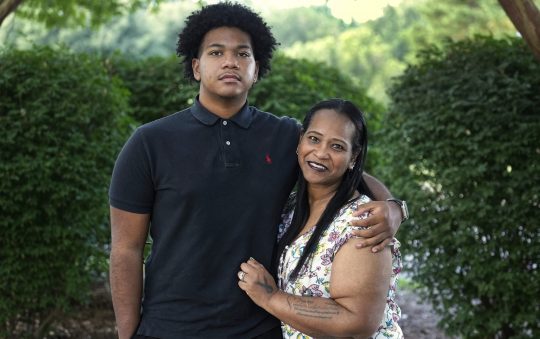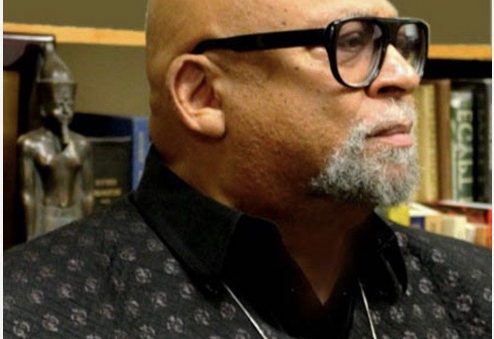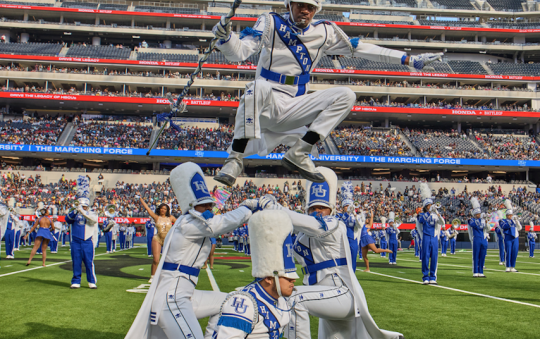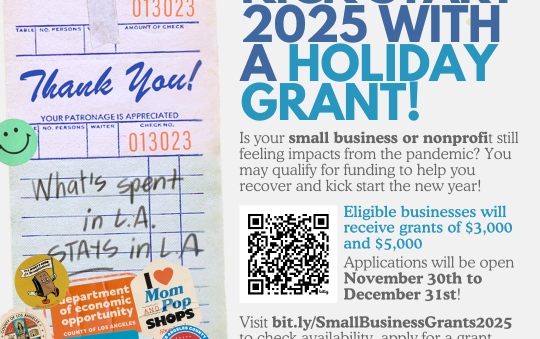
The intellectual and artistic narratives signaling that “we have many rivers to cross,” is on my mind in the wake of the latest Supreme Court (SCOTUS) decision striking down affirmative action initiatives at Harvard University and the University of North Carolina.
Admittedly, as a university President, I am saddened, sickened, disgusted, and disappointed by the decision, but not surprised. What else should we expect from a supreme court that for many, lost its credibility and integrity long ago.
The Supreme Court’s anti-affirmative action judgement is the latest in a series of outcomes that when coupled with national efforts to roll back voting rights, assault culturally based curriculum in schools, close DEI offices in institutions of higher education, intrude upon women’s reproductive rights, strike down the Biden Student Loan Forgiveness Plan, continue to assault and murder Black, Brown, and Asian bodies, authorize businesses to deny service to people because they are LGBTQ, etc., signals to African descent people and other persons of color and the oppressed that it is, as the late R&B musician and vocalist Gil Scott Heron called it “winter in America.”
My disappointment in the SCOTUS decision on affirmative action is not simply anchored in the outcome, but also in the apparent rationale the majority in this conservative court used to buttress their opinions. In reading the decision, the denial of equal protection to some is used as a premise to bolster the plaintiff’s argument and the justice’s opinion that affirmative action programs discriminate against them.
The conservative justices argue that any exception to the constitution’s demand for “equal protection under the law” must survive two daunting steps: 1.) is racial classification used to further a compelling government interest?; and 2.) a question of whether the use of race is narrowly tailored and necessary?
Also, they ask if the remedy proposed is time limited, and can it be tied to metrics that demonstrate their congruence between what was promised via programs instituted and what was achieved. And even though the court reminds itself in this opinion that there are two compelling interests that permit race-based action, including remediating specific instances of past discrimination, it appears to ignore that very fact. That to me is shameful.
In this regard, I am reminded that affirmative action in a contemporary context was originally proposed in the early to mid-1960’s in the Johnson administration to address the structural inequities that existed in society. And given that previous supreme courts have upheld the legality of affirmative action programs and established precedent, and the current court supposedly allows for remedies that address past wrongs, the question in the affirmative action ruling should have been “prove to us that there are no more structural inequities in higher education specifically or society generally.”
That test cannot be passed by a conservative group of justices, a conservative political base, or the SFFA plaintiffs in this case. Instead, defenders of affirmative action are left to demonstrate that their remedial efforts to address past wrongs directed at groups of African American, LatinX, Asian-American, and Native Indian/Indigenous peoples, do not negatively impact the lives of others, perceived to be principally White, even though a member of the Asian American community and that community itself was used as a prop to advance the case.
The tragicomic sensibility of this anti-affirmative action decision is also illustrated in the justice’s writing when they argue that “one of the reasons race is treated as forbidden is that it [supposedly] demeans the dignity and worth of a person to be judged by ancestry, instead of by his or her own merit and essential qualities.”
Hmmm – Sounds like Justice Clarence Thomas is struggling with his identity again and projecting his own sense of inadequacy and fragile sensibilities onto this case. Yet, in gutting affirmative action, there is no mention of how historic policies and practices of bias and discrimination have demeaned the dignity and worth of culturally different (than White) college applicants and regular citizens thru biases and denials in college admissions, employment hiring and discrimination, school discipline in K-12 arenas, compensation and promotion in the workplace, racially restrictive housing covenants, redlined insurance and banking practices, interactions with law enforcement on the street, healthcare delivery and mental health treatment, etc.
While the broad implications of the court’s decision will be debated and interpreted for months if not years, it is unclear what the immediate implication for the California State University system that I am a part of will be. This is especially in light of California’s Proposition 209 and the prohibitions on using race that are already in place. The same may be true in other states as well.
However, I am clear that this is a devastating blow and “legal/political gut punch” to those institutions whose affirmative action and diversity efforts have made real strides over the past several decades. Indeed, it is true that some of us already live with the limitations this decision imposes and yet are still committed to maximizing our degrees of freedom within the confines of what the law allows.
What should be clear to everyone reading this article is that our resolve to support and advance a diversity, equity, and inclusion agenda will not be diminished or deferred by this SCOTUS ruling. Nor will we allow a projection of an Asian figure as the face of this attack on affirmative action to drive a wedge between diverse voices that are inclusive of all people of color, including brothers and sisters in the API community, White allies, and others whose common struggle and connectedness to one another is solid and unbreakable.
If anything, the teachable moment here for all of us, but especially young people, is that “voting matters” and “freedom is not free.” It must be fought for in every generation.
For me, progress is only genuine and authentic if it can be maintained and sustained in the places and spaces we now occupy, and positioned to render support for future generations who need to exercise a greater sense of agency and self-determination in building on the legacy they inherit.
Notably, that also involves defining and framing the discourse on the critical issues of our day. Frantz Fanon was clear that “each generation out of relative obscurity, must reach out and seek to fulfill its legacy or betray it.” African Americans, people of color, women, college/university students, and LGBTQIA brothers and sisters have a history of struggle and persevering through adversity, even in this era of social media.
As a final footnote, I am reminded about the changes I’m witnessing in social media and how an exodus of African Americans, POC, and others from Twitter, given their policies and practices, have evolved into a great migration into a new platform called SPILL. And if we can do that around social media platforms, I am confident we can exercise the same vision, creativity, innovation, and agency SPILL executives are demonstrating in centering culture for conversations among African Americans, POC, LGBTQIA, and other marginalized groups, and apply that to our future equity and diversity initiatives.
Unquestionably, these latest setbacks are real but not impossible to overcome because we have been through worse than this. Let’s all pull together and show our support for each other in these trying times, while we contextualize our history of toil and strife with a lens that magnifies this present-day reality.
Change is going to come and hope is on the horizon; we just need to see and believe in that hope in ourselves, and “keep on keep’in on” through more rivers to cross. And while African Americans and other POC wade in waters of those rivers, seas, or oceans, I would challenge my brothers and sisters in the White community to ask themselves: “How can you bare witness to the suffering of others, sit in silence, and still maintain your humanity?” Come on down to the water, because as Dr. Wade Nobles (1986) reminds us, “United we can know the many rivers to cross.”
Thomas A. Parham, Ph.D, is president of California State University Dominguez Hills in Los Angeles County, California



